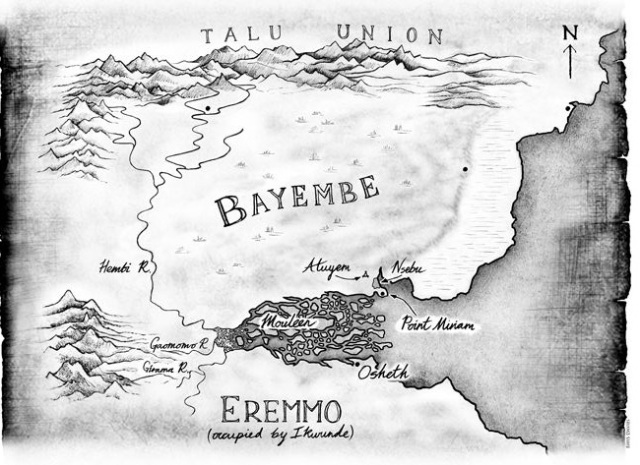The Tropic of Serpents: A Memoir by Lady Trent by Marie Brennan





(4 Mugs)
This is the second book in the Memoirs by Lady Trent series. For those of you unfamiliar with the series, very briefly, it is about a Isabella, a young, upper class woman from Scirland (similar to Victorian England) who has an intense love for dragons and wants to be a scholar. However, she is restricted by her class and gender and Isabella chafes against these restraints. The series details how Isabella becomes a world-renowned dragon naturalist.
**Spoilers**
In the second volume, Isabella is again on a voyage to study dragons. Three years have passed since the first book and she is a widow and mother and she balks against societal expectations that she should abandon her passions in order to stay home and care for her son. In order to study various exotic draconian species, she travels to the war-torn continent of Eriga with her associate, Mr. Wilker, and her companion, Natalie Orscott. Eriga has peoples such as the Yembe, Moulish, and Ikwunde, which are similar to West Africans. Isaballa is Scirling, which is the book’s equivalent to English, so the main characters are venturing into a very different culture.

The Yembe operate under a monarchy with the “oba” as the king figure who lives in a gold-plated palace. The Moulish, on the other hand, occupy the swap of Mouleen or the “Green Hell,” a dense, insect-infested swamp that rich in wildlife diversity. It separates the Yembe from the Ikwunde, who they are at war with. Scirland has offered military support to Bayembe and even though Isabella travels to Eriga for purely scientific reasons, she gets swept up in political issues. In order to be granted admittance into the swamp of Mouleen, the oba asks (more so commands) for her to bring him swamp-wyrm eggs. She agrees and later discovers that dragons are sacred to the Moulish, which puts her between a rock and a hard place. During the next several months, Isabella lives a nomadic lifestyle in the grueling heat and humidity among the Moulish, jumps off of a waterfall, foils an invasion attempt by the Ikwunde, and is accused of political treason.
Similar to the first book, it was slow to start. This book is relatively short (about 336 pages), but it took me around a week to finish it. Brennan does an excellent job with world building and developing cultures (I believe she has an anthropology background), but I wish there was a glossary in the back of the book with all of the terms. She devotes a good portion of the book to describing cultural beliefs, practices, and taboo and political alliances. Also similar to the first book, the appearance of dragons is minimal. Therefore, I wouldn’t recommend going into this book expecting battles and dragon riding. As a naturalist, Isabella spends a good portion of her time observing and sketching dragons rather that interacting face to face with them.
While the action didn’t pick up until around the last 60 pages or so of the book (similar to the first one), I found this book thoroughly enjoyable. Brennan’s world building is excellent and I love Isabella. She is intelligent, passionate, cunning, and bold. She is aware of her faults and shortcomings and doesn’t try to hide them. I appreciate that while she may not always believe in various cultural customs and norms, she is culturally sensitive, even if it is only to promote harmony that will allow her to continue her research. The book also has a feminist vibe, which is rare in fantasy books (in my experience). Isabella refuses to be confined by the trappings of her gender, social station, or motherhood. This may be another reason why the series appeals to me. I am very interested in the upcoming books as they have been hinting that Isabella will rewrite the book on dragon taxonomy. Unfortunately, my library doesn’t have the third book, but I am looking forward to reading it in the near future.
